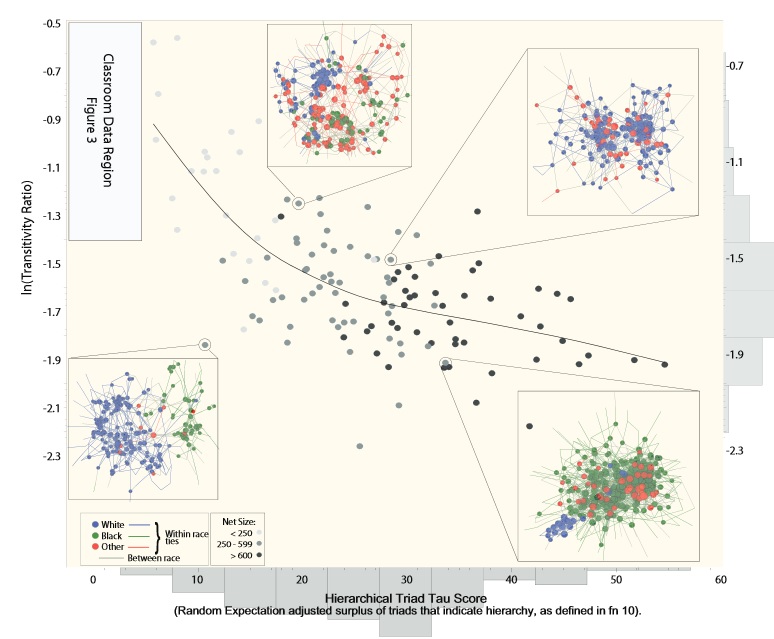
Hierarchy, and Size, with Exemplars
(McFarland, p. 17)
McFarland used two different datasets (one looking at classroom level and one looking at school level friendships) to analyze the network ecology of tie formation. His team found that larger school size and greater freedom to choose activities resulted in more homophily, while small school size and a more prescriptive curriculum resulted in greater integration.
However, they point out that student bodies rarely fall into just one camp – instead, both types of systems may exist within the same institution. Rabinovitz-Stanford explains: “A bigger and more diverse student population may well foster self-segregation, but a smaller and more elite school is almost inherently more segregated in the first place.” In the words of McFarland: “The truth is that we are not sure which kind of adolescent society is best for youth social development…There likely isn’t a simple answer.”
News Article
Full Journal Article



